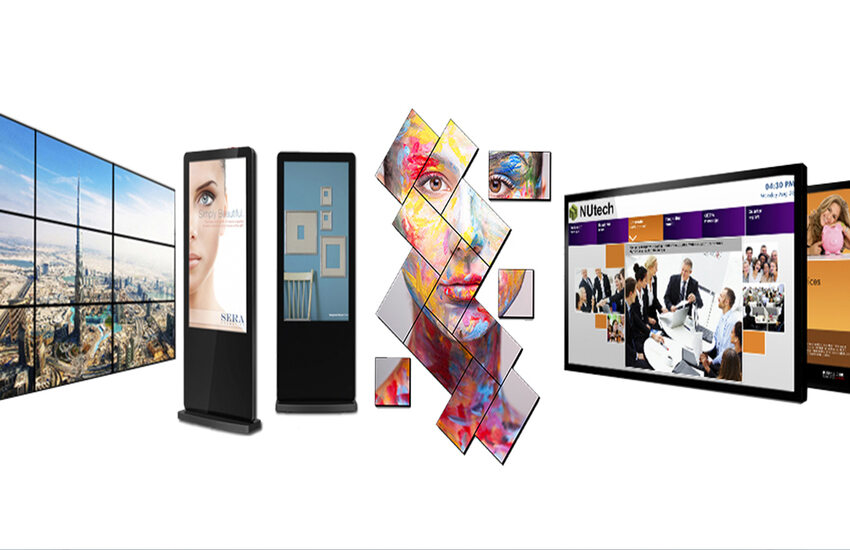Understanding Digital Signage Display Technology
Digital signage display is a powerful tool used in modern communication, marketing, and information sharing. It refers to electronic display systems used to present digital content such as videos, graphics, animations, and real-time data. These displays are commonly found in public spaces, retail environments, transportation systems, corporate buildings, restaurants, and more.
At its core, the best digital signage system comprises a digital screen, content management software, and a media player or system-on-chip (SoC) that connects to the network and drives the display.
Key Components of a Digital Signage Display System
1. Display Screens
The most visible part of any digital signage solution is the screen itself. These screens come in various types:
- LCD/LED Panels: Most common for indoor usage due to high resolution and clarity.
- OLED Displays: Offer superior contrast and deep blacks, ideal for premium environments.
- Projection Screens: Useful for large-scale or temporary installations.
- Outdoor Displays: Weatherproof and bright enough to counter sunlight glare.
Each display type is selected based on the use case, viewing distance, and environmental conditions.
2. Media Player or Integrated System-on-Chip (SoC)
Digital signage displays either use an external media player or come with a built-in system-on-chip processor. These devices interpret the content and control playback.
- External Media Players: These are compact, dedicated devices connected to the display through HDMI or USB.
- SoC Displays: More integrated, with onboard computing power, reducing setup complexity.
3. Content Management System (CMS)
A content management system is the backbone of any digital signage network. It allows users to:
- Create, schedule, and manage digital content.
- Push updates in real-time or schedule them ahead.
- Monitor display status and analytics.
Cloud-based CMS platforms are favored for their flexibility, scalability, and remote management features.
4. Network Connectivity
Digital signage displays require internet or intranet connections to receive updates and communicate with the CMS. These connections may be:
- Wired (Ethernet) – Stable and fast.
- Wireless (Wi-Fi) – Easier to install and suitable for most indoor environments.
- Cellular (4G/5G) – Used in mobile or outdoor locations with limited infrastructure.
How Does a Digital Signage Display Work?
The process involves several integrated steps:
- Content Creation: Graphics, videos, animations, or live data are designed using graphic design tools or CMS software.
- Scheduling and Deployment: Content is scheduled via CMS based on timing, geography, or audience profile.
- Distribution: The CMS sends content to the display device over the network.
- Playback: The media player or SoC interprets the files and plays them on the display.
- Monitoring and Updates: The CMS provides analytics and performance feedback, enabling fine-tuned adjustments.
Types of Digital Signage Applications
1. Retail Digital Signage
Retail environments leverage digital displays to increase engagement, promote products, and drive sales through:
- Flash sales promotions.
- Product tutorials.
- Interactive kiosks.
2. Corporate Communication
Digital signage enhances internal communications by providing:
- Performance dashboards.
- Employee recognition boards.
- Meeting room booking systems.
3. Transportation Hubs
Airports, train stations, and bus terminals use signage for:
- Real-time arrival/departure updates.
- Wayfinding maps.
- Emergency announcements.
4. Hospitality and Restaurants
From digital menus to interactive entertainment screens, restaurants and hotels use signage to:
- Display menus with pricing.
- Promote daily specials.
- Provide concierge services.
5. Educational Institutions
Schools and universities apply digital signage for:
- Class schedules.
- Event calendars.
- Emergency alert systems.
Benefits of Digital Signage Displays
1. Enhanced Engagement
Motion graphics and videos capture attention faster than static signs, making messaging more effective.
2. Real-Time Content Updates
Administrators can instantly update content from anywhere in the world, keeping messages relevant and timely.
3. Cost Efficiency Over Time
Although initial setup costs are higher than print signage, digital signage eliminates recurring print costs and manual updates, leading to long-term savings.
4. Brand Consistency and Customization
Digital signage ensures uniform branding across locations while still allowing location-specific customization.
5. Environmental Sustainability
Replacing paper-based systems with digital signage supports green initiatives by reducing waste.
Interactive Digital Signage – A New Era of Engagement
Interactive displays are revolutionizing customer engagement by integrating touch technology, motion sensors, QR scanning, and voice recognition. These features allow users to:
- Navigate product catalogs.
- Fill out the forms or feedback.
- Play branded games or experiences.
Touchscreen kiosks in malls and airports are prime examples of this evolution, enhancing both user experience and data collection.
Future Trends in Digital Signage Technology
AI-Powered Personalization
Artificial Intelligence is being used to deliver hyper-targeted content based on demographics, behaviors, and even facial recognition.
Integration with IoT Devices
Digital signage is increasingly connected to IoT sensors, allowing dynamic content changes based on weather, traffic, or inventory levels.
3D Holographic Displays
The emergence of 3D holographic technology offers immersive and captivating visuals for retail and exhibitions.
Voice-Activated Signage
Hands-free operation is becoming a necessity in public spaces. Voice-activated digital signage allows accessibility and hygiene-conscious interaction.
Challenges of Digital Signage Implementation
Despite its advantages, organizations must address:
- Initial Capital Investment: Hardware and software setup can be costly.
- Content Strategy: Without engaging content, the technology falls flat.
- Security Risks: Network-connected displays must be protected from cyber threats.
- Maintenance Needs: Displays and media players require regular updates and physical maintenance.
Best Practices for Deploying Digital Signage
- Know Your Audience: Understand who you’re targeting to create relevant content.
- Keep Content Dynamic: Rotate content frequently to maintain interest.
- Design for Distance: Ensure font sizes and colors are legible from afar.
- Test Before Scaling: Pilot small before committing to full-scale deployment.
- Leverage Analytics: Use data insights to refine messaging and improve ROI.
Conclusion
Digital signage displays have transformed the way businesses and institutions communicate. With flexibility, scalability, and visual impact, they represent the future of customer engagement and internal communication. Whether you’re a retailer, corporate leader, or service provider, integrating digital signage into your operations can drastically enhance visibility, interactivity, and efficiency.



